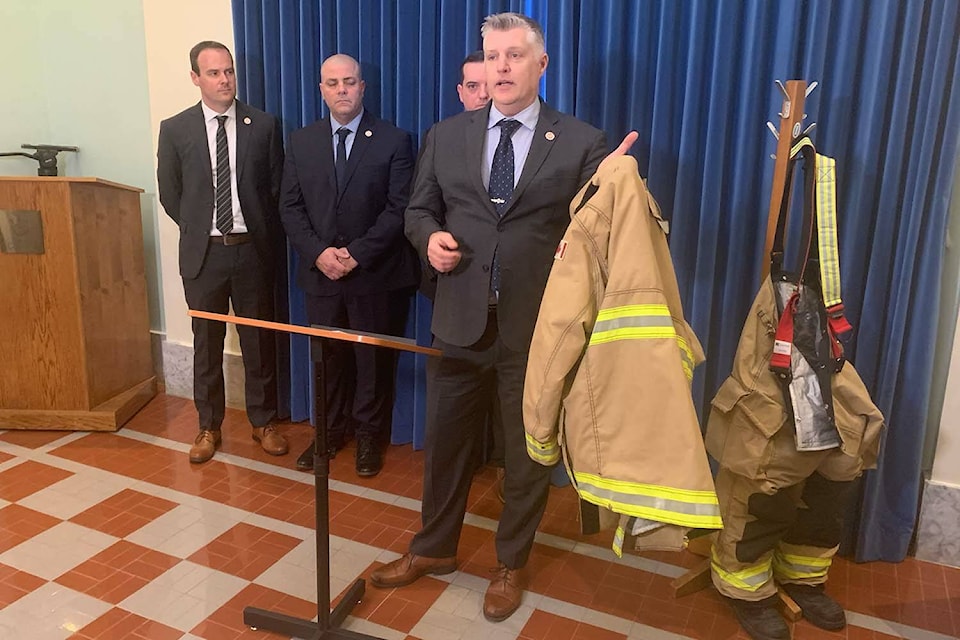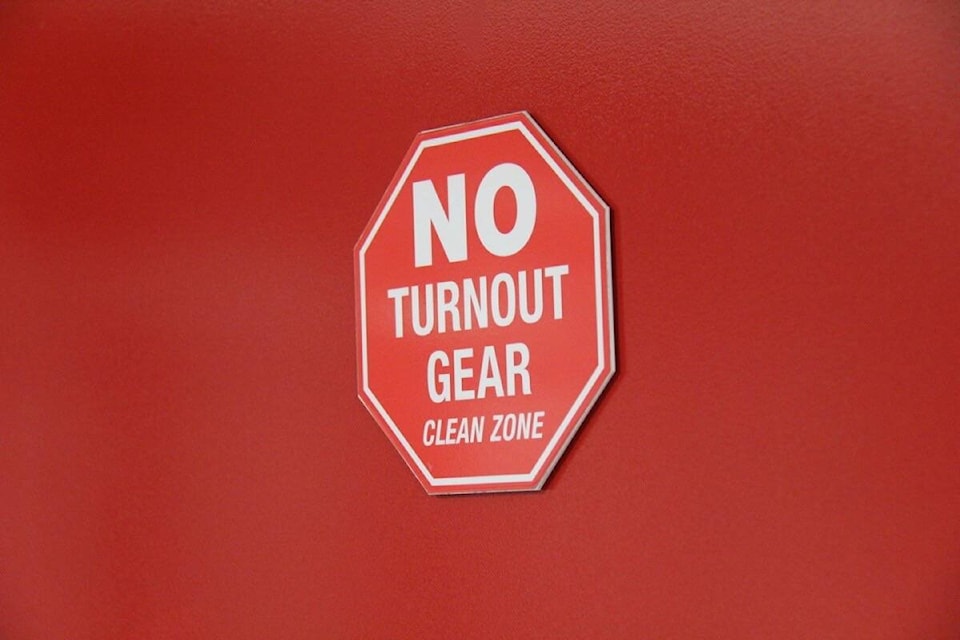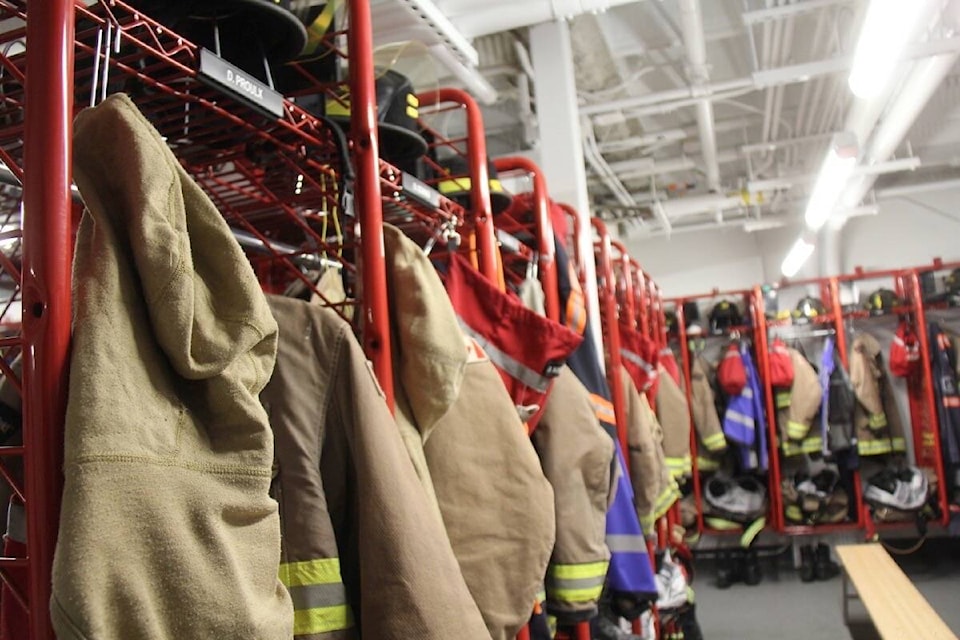Cutting out potential cancer-causing gear seems a simple decision on the surface – reality sees firefighters work closely with potentially harmful chemicals in both the foam they fight fires with and the gear that protects them from the flames.
Creating policy prohibiting the harmful equipment is a logical starting point for MLA Adam Olsen, who filed a member’s bill on the subject.

The target is to get rid of personal protection equipment including pants, gloves and jackets as well as firefighting foam known to contain polyfluoroalkyl substances – commonly called PFAS or “forever chemicals.” PFAS is a category of manufactured chemicals previously linked to cancer and other diseases.
If enacted, the bill would require employers to provide PFAS-free fire suppression foam and prohibit foam containing PFAS, by Dec. 31, 2025. It would also require transition to PFAS-free personal protective equipment by Jan. 1, 2029.
Olsen picked up the cause pitched by the BC Professional Fire Fighters’ Association and tabled the bill on March 14.
RELATED: BC Greens table law to douse ‘forever chemicals’ in firefighting gear
In Sidney, which lies in Olsen’s constituency of Saanich North and the Islands, the fire department works from a community safety building completed in 2019. As early as the design phase, fire chief Brett Mikkelsen sought specific requirements, looking for expedient workflow to get crews to the trucks quickly while maintaining no cross-contamination. For example, all the “dirty areas” such as the turnout gear room and garage are on separate airflow from clean areas such as the kitchen, dorm and gym.

The goal was to avoid known toxins encountered during active fires as materials burn, as well as exhaust from the vehicles in the hall. They’ve also known about the “forever chemicals” existing in firefighting foam for a while, the chief said.
“In Sidney our plan is to obviously, once we run out of existing stock, we’ll start procuring the new non-PFAS product,” Mikkelsen said.
A more recent revelation, is that turnout gear contains PFAS – in fact it’s a potentially life- and limb-saving element that creates flame resistance.
The plan there is to replace the gear with something PFAS-free – as it becomes accessible.
In the interim, best practices are in place, including only wearing gear when necessary, ensuring appropriate decontamination and isolating dirty turnout areas from clean.
READ ALSO: Sidney firefighters sweat out poisons after battling toxic blazes
“Every set of turnout gear has a 10-year shelf life whether it’s used 100 times or one time, at 10 years it has to be replaced,” Mikkelsen said. That provides a natural replacement timeline for non-PFAS gear, if the supply is available. Even if a department could find the huge cash layout needed to replace all turnout gear in short-order, it can be hard find.
“Until the last couple weeks there hasn’t been a single manufacturer who has been able to provide a certified PFAS-free product on the market,” said Oak Bay Fire Chief Frank McDonald.
That department also works to ensure good decontamination habits and limits wearing affected gear to as-required.
While it’s not cut and dried, Olsen hopes if the province creates policy it will create demand and result in more PFAS-free personal safety equipment becoming available as technology constantly adjusts.
“This is a transition, to be expected. When fire departments and fire chiefs set their budgets and their finances, they’re constantly upgrading gear. As that gear comes up … we want to make sure the provincial standards will require them to upgrade into the standard gear,” Olsen said. “As they design new gear that is PFAS-free those fire departments can start to implement them.”
The goal is not to point fingers, but to work proactively as well as create a level playing field from Vancouver to small volunteer-run departments, Olsen said.
READ ALSO: Greater Victoria firefighters battle in 1-day memorial hockey tournament
He envisions a reality where volunteer gear might go in the trunk of a car, connecting with kids hockey or ball gear, extending exposure beyond the firefighter. The province would need to financially support such a transition, he said.
The bill for Olsen is not only a starting point to provide a healthier work environment for firefighters in the province, already facing higher cancer probability, but to highlight other areas “forever chemicals” are present.
“This is an important issue for firefighters but it’s an important issue more broadly in our society,” Olsen said, noting PFAS are incorporated in many everyday items such as menstrual products and sports gear.
“It did open the door for me for just how prevalent these chemicals are in many, many products and product types.”
READ ALSO: Why cancer is deadlier than fire for firefighters in B.C.



